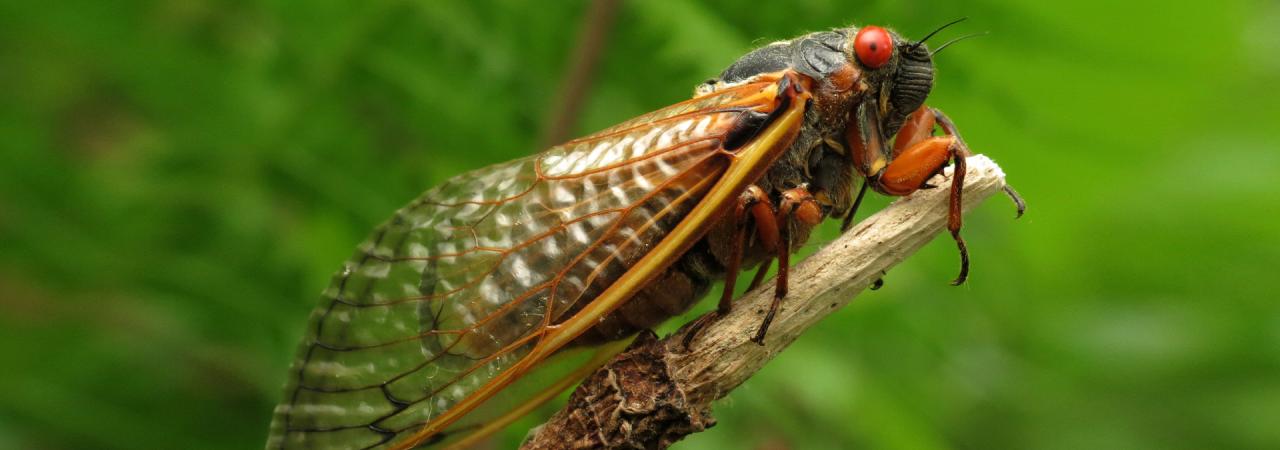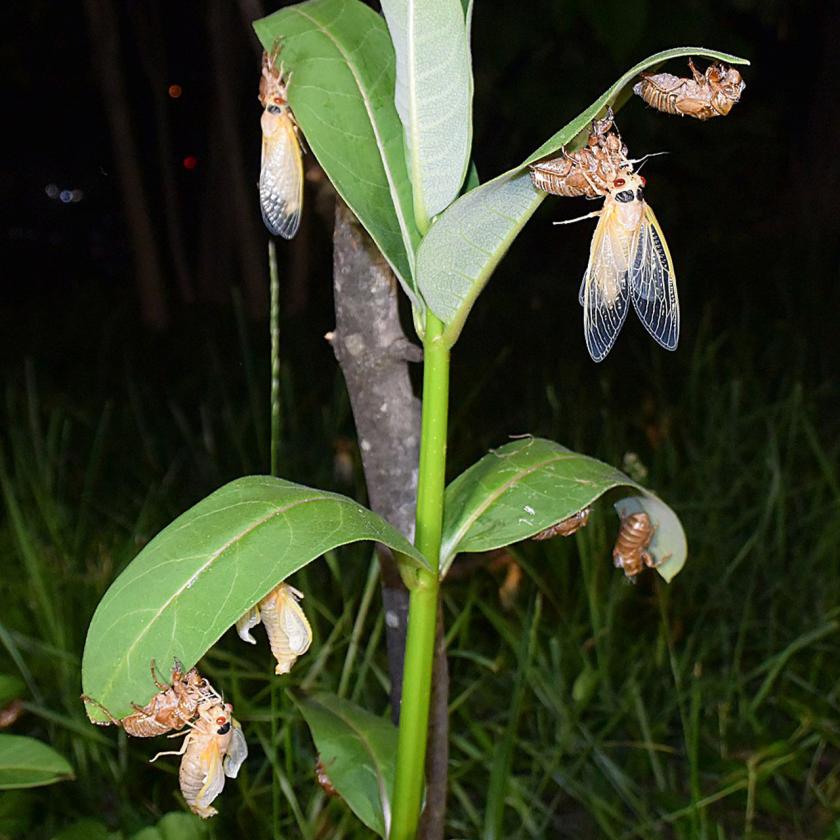Bugs on the Battlefield

A Brood X cicada at Rock Creek Park, Washington, D.C.
Hope you’re finding a “cool” place to spend your summer! The “dog days” of summer have arrived, along with all the exciting and unique creatures that historically make their presence known with the elevated temperatures.
Brood X Cicadas
Summer was ushered in this year by the 17-year Brood X cicadas, one of the loudest summer visitors. These special insects were expected in the District of Columbia and parts of Delaware, Georgia, Illinois, Indiana, Kentucky, Maryland, Michigan, New Jersey, New York, North Carolina, Ohio, Pennsylvania, Tennessee, Virginia and West Virginia.

In 1776, the generation of cicadas then alive had been underground for 10 years and did not reemerge until 1783, missing the entire Revolutionary War. Cicadas born in 1800 were underground during the War of 1812.
Prison Breaks & Maggot Therapy
During the American Civil War, Union soldiers held at the Confederate military prison in Andersonville, Ga. relied on cicada choruses to mask the sounds of prison breaks. Prison breaks were likely popular, given the horrendous conditions at Andersonville, a prime breeding site for flies and maggots. Maggots were, however, beneficial in some cases. What is sometimes described as “maggot therapy” was used on the battlefield to remove decayed tissue and clean wounds!
Angry Bees at Antietam
Other insects have impacted battles from all wars. During the Battle of Antietam, the 132nd Pennsylvania Volunteers advanced upon the Roulette Farm just as a shot from a Confederate battery hit the farm’s bee yard. The angry bees attacked some of the Union troops, along with the Confederate troops, and only the quick advance past the farm could spare them from the stinging effect of both “weapons.”

The 200-acre Roulette Farm was preserved with a conservation easement by the Trust, the National Park Service’s American Battlefield Protection Program, the Maryland Department of Natural Resources, the Maryland Environmental Trust and The Conservation Fund.
More Summer Bugs
Summer battles were often plagued by nests of yellow-jackets and hornets, not to mention the flies and other insects that meat rations attract.
Mosquitoes and malaria impacted the Revolutionary War, with widespread malaria affecting the southern colonies in 1780, a decisive theater. Much of the Continental Army, having been raised in the South, faced malaria frequently, whereas British troops had almost no experience with the disease. The British Army experienced its own malaria epidemic in the summer of 1780, at times incapacitating half of its troops.
In June of 1781, British commander Lord Cornwallis encamped at Yorktown, along with many mosquitoes. By the end of the summer, malaria had taken hold of Cornwallis’ Army and more than half of his men were too sick to stand duty and unable to conduct the counter-siege operations that Cornwallis knew were required. Mosquitoes and malaria may have both helped with the fight for our country’s independence!
I hope you find a “cool” battlefield park to enjoy and explore this summer and its bugs safely!
Sincerely,
Kathy Robertson
Deputy Director, Real Estate
American Battlefield Trust
PS: If you’re interested in more info bugs and their role during the American Civil War, read Gary L. Miller’s article entitled Historical Natural History: Insects and the Civil War, published in the American Entomologist, Volume 43, Issue 4, Winter 1997.

